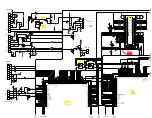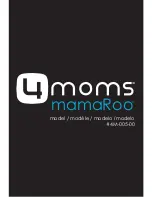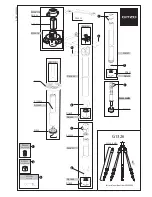
2
• Read and follow all labels and the Owner’s Manual carefully before installing,
operating, or servicing unit. Read the safety information at the beginning of the
manual and in each section.
• Use only genuine replacement parts from the manufacturer.
• Perform maintenance and service according to the Owner’s Manuals, industry
standards, and national, state, and local codes.
WELDING HELMETS do not Provide
Unlimited Eye, Ear & Face Protection.
NOISE can Damage Hearing.
READ INSTRUCTIONS.
FUMES & GASES can be Hazardous.
Arc rays from the welding process produce intense visible and invisible (ultraviolet and
infrared) rays that can burn eyes and skin. Sparks fly off from the weld.
• Use impact resistant safety spectacles or goggles and ear protection at all times when
using this welding helmet.
• Do not use this helmet while working with or around explosives or corrosive liquids.
• Do not weld in the overhead position while using this helmet.
• Inspect the auto-lens frequently. Immediately replace any scratched, cracked, or pitted
cover lenses or auto-lenses.
Noise from some processes or equipment can damage hearing.
• Wear approved ear protection if noise level is high.
Welding produces fumes and gases. Breathing these fumes and gases can be hazardous
to your health.
• Keep your head out of the fumes. Do not breathe the fumes.
• If inside, ventilate the area and/or use local forced ventilation at the arc to remove
welding fumes and gases. The recommended way to determine adequate ventilation
is to sample for the composition and quantity of fumes and gases to which personnel
are exposed.
• If ventilation is poor, wear an approved air-supplied respirator.
• Read and understand the Safety Data Sheets (SDSs) and the manufacturer’s
instructions for adhesives, coatings, cleaners, consumables, coolants,
degreasers, fluxes, and metals.
• Work in a confined space only if it is well ventilated, or while wearing an air-supplied
respirator. Always have a trained watch person nearby. Welding fumes and gases can
displace air and lower the oxygen level causing injury or death. Be sure the breathing air is safe.
• Do not weld in locations near degreasing, cleaning, or spraying operations. The
heat and rays of the arc can react with vapors to form highly toxic and irritating gases.
• Do not weld on coated metals, such as galvanized, lead, or cadmium plated steel,
unless the coating is removed from the weld area, the area is well ventilated, and while
wearing an air-supplied respirator. The coatings and any metals containing these
elements can give off toxic fumes if welded.
Summary of Contents for BLUE FX
Page 19: ...17 Notes...
Page 20: ...welding com au 1300 300 884 235663 ISS 1 JAN 2017...





































